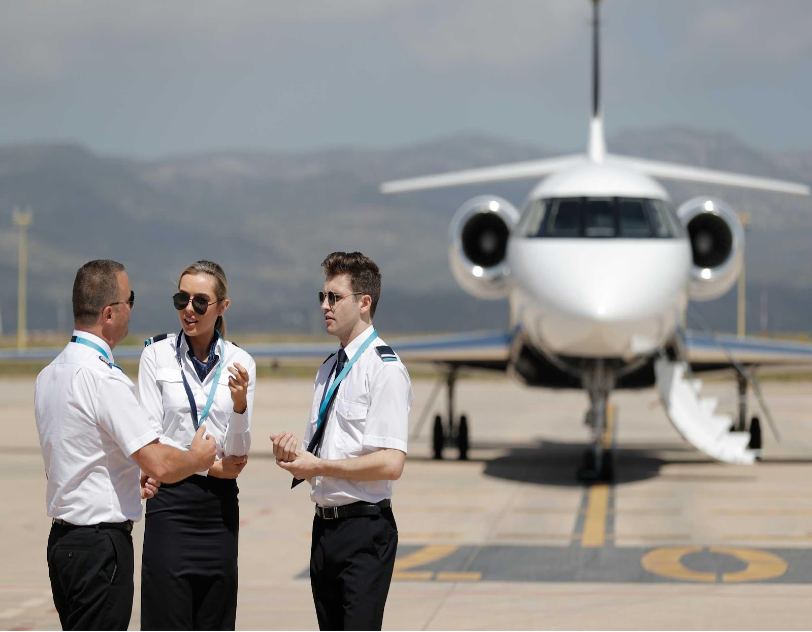Turbulence is an absolutely common phenomenon in aviation, at times causing alarm and needing skilled handling by flight personnel. It’s understanding is very necessary to make the flights unthreatening and peaceful.
In this blog post, we are going to discuss this phenomenon in detail.
Let’s get right into it.
What is turbulence?
Turbulence is “irregular atmospheric motion characterized by chaotic changes of pressure and flow velocity, from light bumps to severe, even aircraft movement-jolting jogs,” the Federal Aviation Administration says.
What are the causes?
The causes of of turbulence are varied, from atmospheric pressure to jet streams, air around mountains, weak weather fronts, and thunderstorms.
How Turbulence Works
For turbulence to take place, there has to be high-velocity, disorderly, exceedingly swift movements of air. This can result from jet currents moving at high speed, disagreeing temperatures of air masses running into each other in a frontline, or when air blows over mountains.
These or other special conditions have been taken into account in the construction of aircraft to handle the movements from turbulence due to their aerodynamic structures.

Effects on Aircraft
In fact, believe it or not, modern aircraft are built to withstand turbulence even if it is of a severe nature with no scratch to the fuselage. Pilots undertake intensive training in how to guide an airplane through turbulent airspace safely using procedures that give precedence to passenger safety as well as comfort.
Measures may often involve a change in directions, or height, or ensuring that everybody is strapped up properly.
Tips for Flight Crew
Pre-Flight Weather Briefing
For pilots, always initiate your flying day with a good weather briefing. Be informed of areas of possible turbulence along your route that can easily be avoided by diverting the flight into other paths or altitudes.
Flying adjustments on the fly include:
Pilot: In case one suddenly runs into unanticipated turbulent weather conditions, they may as well consider in-flight adjustments or a reroute, possibly. This may involve the use of air traffic control (ATC) facilities to seek smoother air compared to the report by other flights.

Effective Communication Practices with Passengers:
Announce clearly to your passengers the amount and duration of the turbulence you are about to hit.
Reassure gently that the plane is in a safe condition and that some bumpy air is quite normal.
Advice to passengers: kindly keep your belts on.
Tips for Passengers
Safety Practices and Coping Mechanisms for Dealing with Turbulence:
Stay Buckled Up: Always keep your seatbelt fastened when seated to prevent injuries from sudden turbulence.
Relaxation Techniques: Use deep-breathing exercises or listen to calming music if you feel anxious during turbulence.
Advice on Post-Turbulence Medical Consultation
Get Medical Help if Need Be: In case you ever get into a situation that burdens you with some form of physical or emotional stress due to a rough flight, consider consulting a physician.
Technological Advancements
Current and Future Technologies for Turbulence Detection and Mitigation:
Much improved weather radar equipment: The modern plane with the installation of much-improved radar equipment enables the pilots up in the cockpit to learn far ahead of time about severe weather that may be many miles away.
New technologies to come, such as Light Detection and Ranging (LIDAR) technology, could greatly help in the future for clear-air turbulence detection by giving pilots a chance to move out of their way in time.

Aircraft Design Improvements Focused on Turbulence:
Aerodynamic Enhancements: Improved resistance to turbulence that is higher and stability brought into airplane designs since they are brought in chronologically by the ongoing and continuous advancement in airplane designs. Structural Resilience Materials and means research in the ongoing construction of aircraft will continue to add to the resilience potential that would be able to resist turbulence without threatening the life of the traveler.
Conclusion
Major turbulence is one of the reasons a professional pilot might know how to deal with it in order to complete a safe trip and, at the same time, make sure that people are comfortable.
As technology improves every day towards inventing newer aircraft designs with turbulence in mind flights are expected to become even more smoother with time.







Leave A Comment